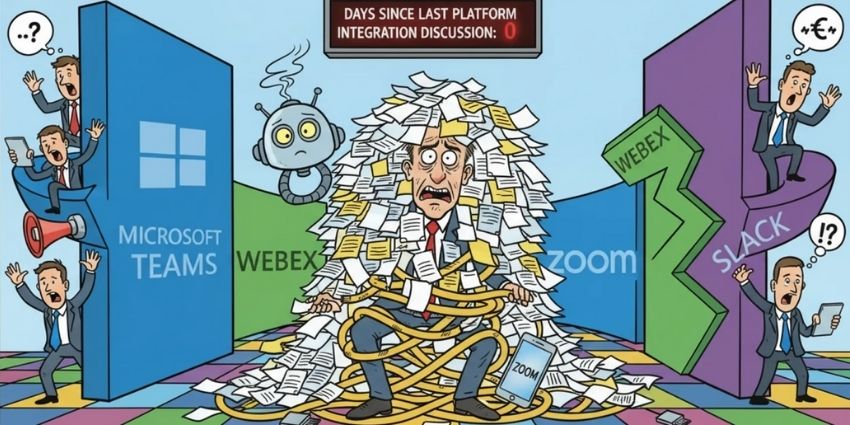The trend for collaboration is growing more aggressive by the day.
Now that work has become something you do, rather than a place you go to, companies are relying more on the tools that keep their employees connected. Slack is a software solution that transforms the way that employees communicate.
On the heels of its fifth anniversary, Slack is celebrating a number of accomplishments, including more than 10 million daily active users in over 150 countries worldwide. Slack’s user base also includes 65 of the Fortune 100 companies. We spoke to Slack’s Head of UK, Stuart Templeton, to find out more about what the organisation has been up to, and the rise of collaboration apps.
What was the appeal of joining Slack?

Before joining Slack, Stuart was in Salesforce financial services positions for about 7 years. “Salesforce were very good to me. However, when the rare opportunity arose to join Slack, I couldn’t resist. It seemed like a chance that was just too exciting to miss.”
“I think the thing that has struck me the most is the scale of the business problem that we’re addressing. All organisations, no matter their size, are looking to drive collaboration and communication. We thought that it would be harder to communicate the need for collaboration tools to the workforce. However, it’s been something that’s very widely accepted and embraced.”
How is the way people work today changing?
Many people regard Slack as a “messaging tool”, but the application actually offers so much more than messaging. According to Stuart, it’s a business collaboration hub, designed to make people’s working lives simpler and more productive.
“We think messaging is foundational to the future of work. We built Slack to enable people to work however they want to. Messaging is an important part of that. However, our focus is on breaking down silos and ensuring collaboration is available from a range of angles.”
According to Templeton, the thing that has most fueled the change in the way people work has been the scale of the business problem that companies face today:
“Customers need a flexible and scalable solution to their communication and collaboration issues”
How has Slack Transformed Business Communications?
In recent years, we’ve seen a massive transformation in the way that people communicate at work. We didn’t have instant messaging and chat in the past. Consumer trends are quickly making their way into the business environment, as employees demand more from their tools.
“Slack has taken the convenience of messaging and the availability of that experience and blended it with the things that large enterprises need. Governance, security, and the ability to structure information well in channels are all things that people are looking for.”
According to Stuart, another great thing about tools like Slack is that it’s possible to get information rapidly and easily. “It’s not just getting information by messaging each other. You also have third-party integrations pumping information into your channel too.”
Templeton pointed out that as a collaboration hub, all communication and interaction methods have a role to play in Slack. “We want to enable customers to bring their tools and ways of working into channels. This means integrations with third-party tools, but also opportunities for conversations via voice calls, video conferencing, meetings or whatever. Our role is to enable best-of-class integrations.
Integrations are a valuable part of Slack’s unique proposition.”
“A big focus of ours is to continue offering the experiences customers need through integrations. We want to bring all of the business applications that people need into the environment they’re using”
The power of Channels
Slack’s plan, for now, is to continue delivering the “excellent collaboration hub” that their customers rely on.
One thing that has grown a lot recently is the Shared Channels space. Stuart told me that Shared Channels provide a simple and secure way for people to work with external partners, and that Shared Channels will create more utility for existing users of Slack.







